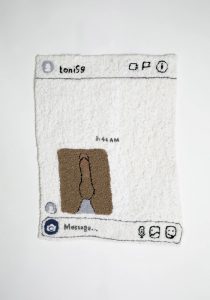A rite of passage, a sign of transgression, a symbol of youth and rebellion or simply an expressive language for contemporary artists.
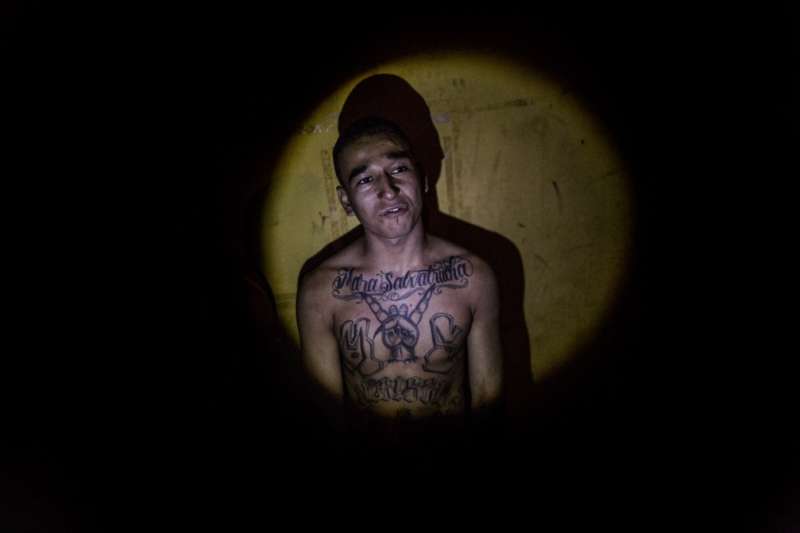
Manu Brabo, A member of Mara Salvatrucha is seen after this arrest during an anti gang raid in Soyapango, a few km from San Salvador, El Salvador, May 2015
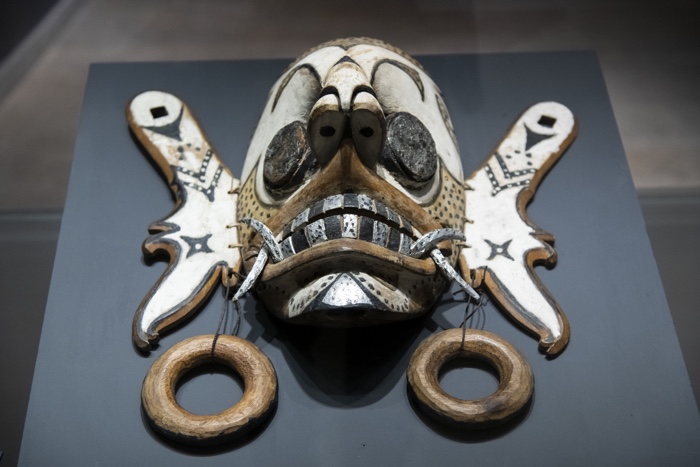
Ceremonial mask, Dayak, Borneo XIXth century. Courtesy MuCiv, Roma
TATTOO. L’arte sulla pelle / TATTOO. Art on the Skin, a show that opened a few weeks ago at the MAO, the Museum of Oriental Art in Turin, explores the cultural, social and artistic dimensions of tattoos.
The exhibition is a joy to visit. Not only does it present artifacts and information related to tattoos in Japan, Pacific Ocean and in the South East of Asia throughout history but it also makes them enter into a dialogue with bikers, Russian and Italian criminals, skinheads, Hollywood movies and Delvoye’s tattooed pigs.
I’ve blogged about tattoo in culture numerous times already so i’ll just take the lazy road and leave you with lots of links and images and very few texts:
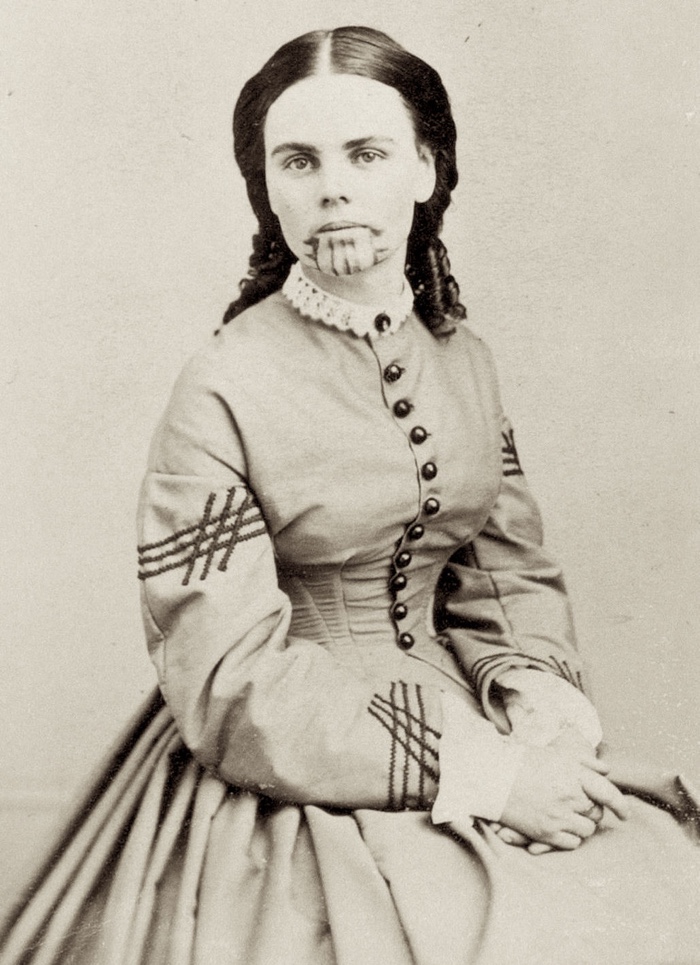
Olive Ann Oatman, September 7, 1837
Olive Oatman was probably the first occidental woman who was exhibited in public for her tattoos. Her parents were killed in 1851, when she was fourteen, by a Native American tribe who later sold her and her sister to the Mohave people. The Mohave people tattooed both of the girls to welcome them and help them integrate better in their society. After several years with the Mohave, she returned to white society.
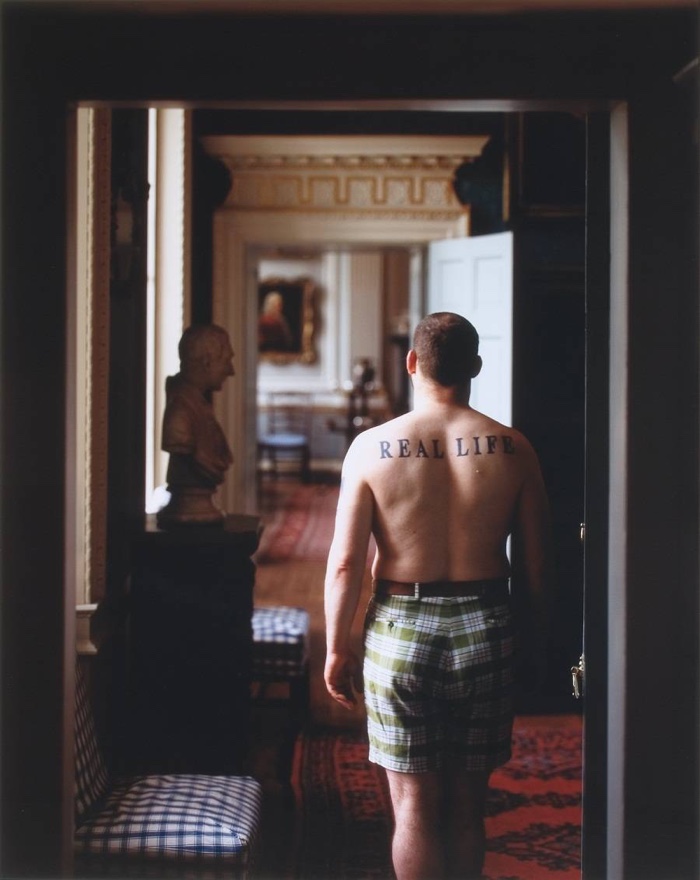
Ross Sinclair, The Real Life Portraits, Duff House #5, 2000
Ross Sinclair initiated his Real Life project in 1994 when he had the words ‘Real Life’ tattooed across his back. Since then it has grown into a 20-plus year performance project, taking form in a wide range of exhibitions, mediums and publication contexts.
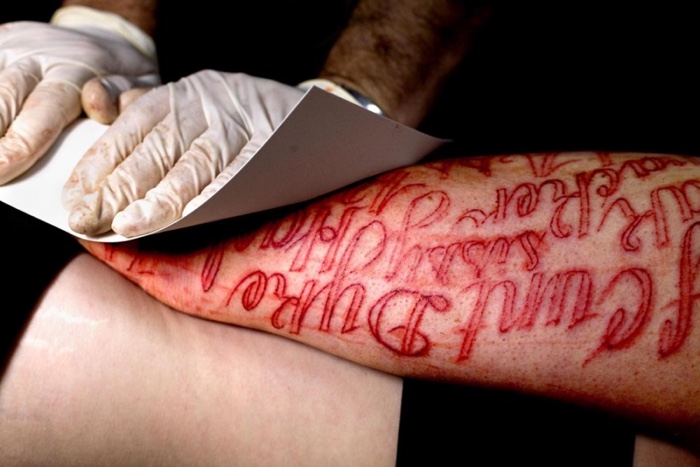
Mary Coble, Untitled (Blood Script Portfolio), 2008
Mary Coble had 80 insulting words tattooed without ink in front of a live audience over the course of two days. Blood impressions on paper were made of each word to generate a set of unique paintings.
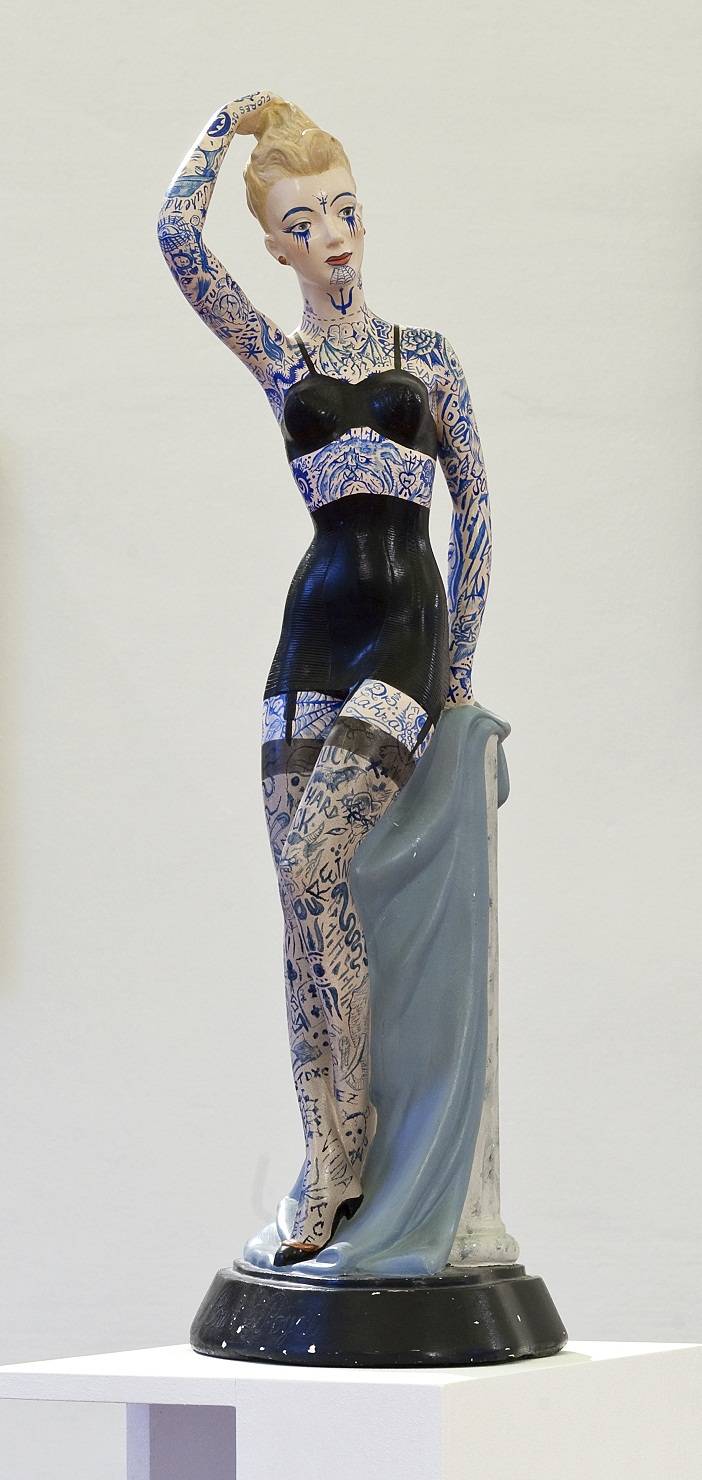
Dr Lakra, Untitled (Pin Up Girl), 2011
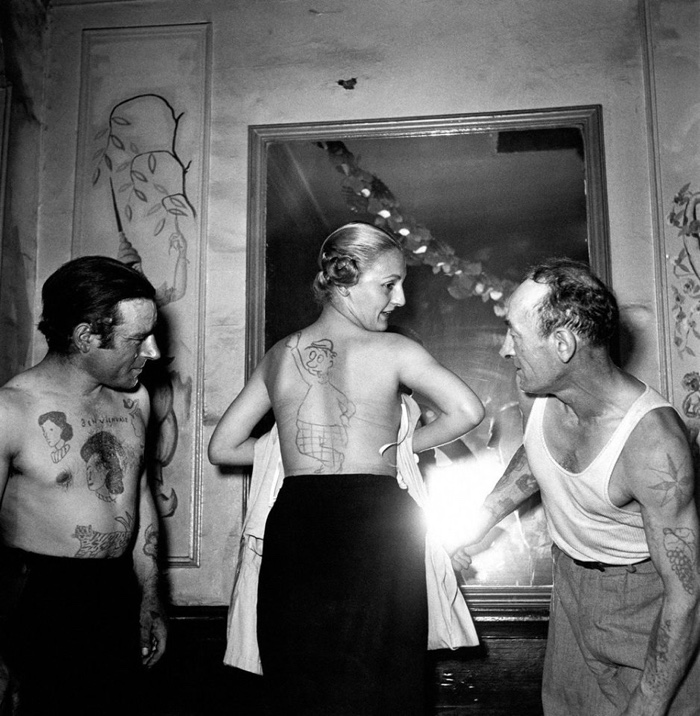
Robert Doisneau, Concours du plus beau tatouage, quartier Mouffetard, octobre 1950 © Atelier Doisneau
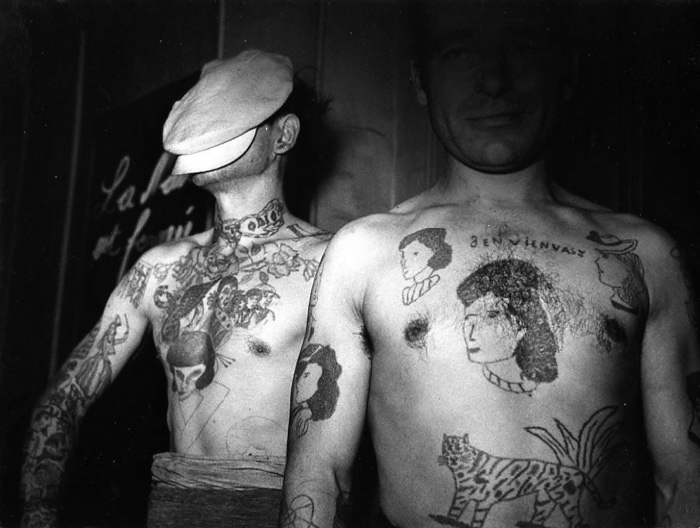
Robert Doisneau, Concours du plus beau tatouage, quartier Mouffetard, octobre 1950 © Atelier Doisneau
Sorry for the poor quality of the photo below. I took it with my phone while visiting the show. I couldn’t find a better quality of image online but still wanted to mention the work of Nico Mingozzi. I love what he does.
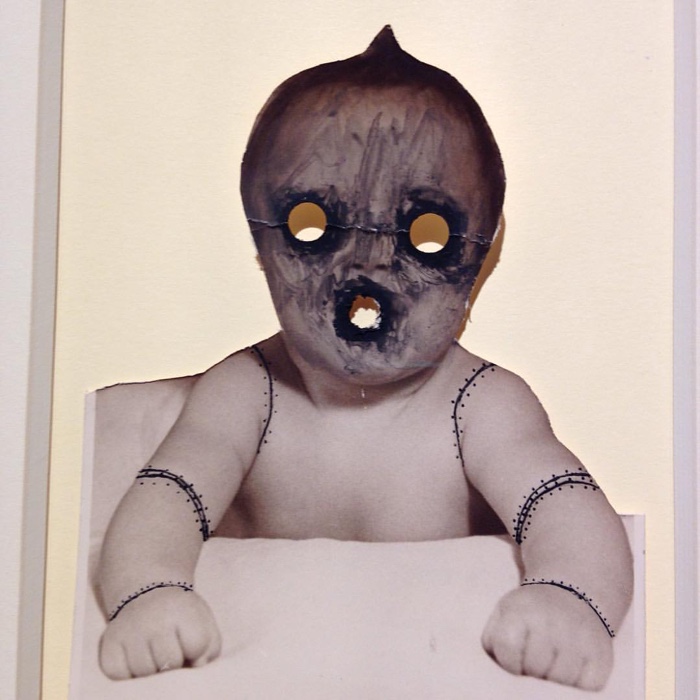
Nico Mingozzi, Senza titolo, 2015
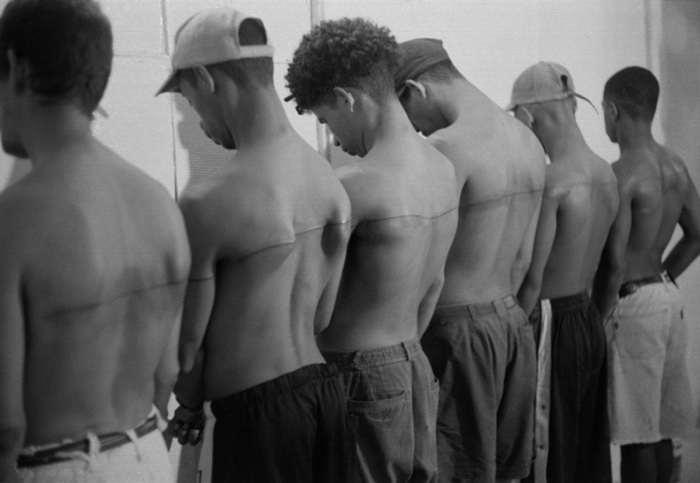
Santiago Sierra, 250 cm Line Tattooed on Paid People, 1999
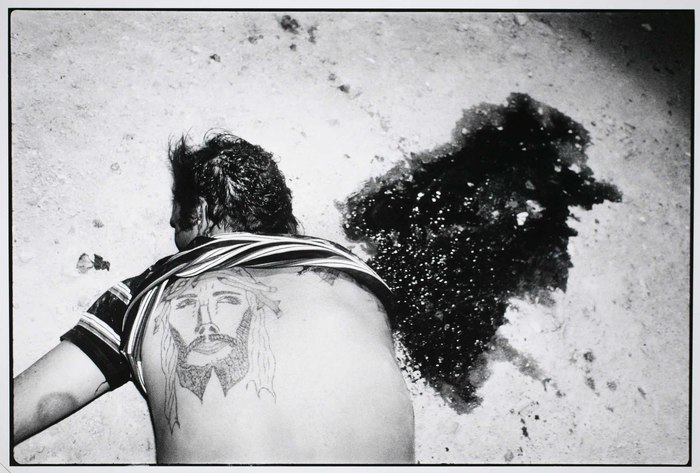
Letizia Battaglia, A member of the Mafia with a Christ tattoo, murdered by his colleagues, Palermo, 1982
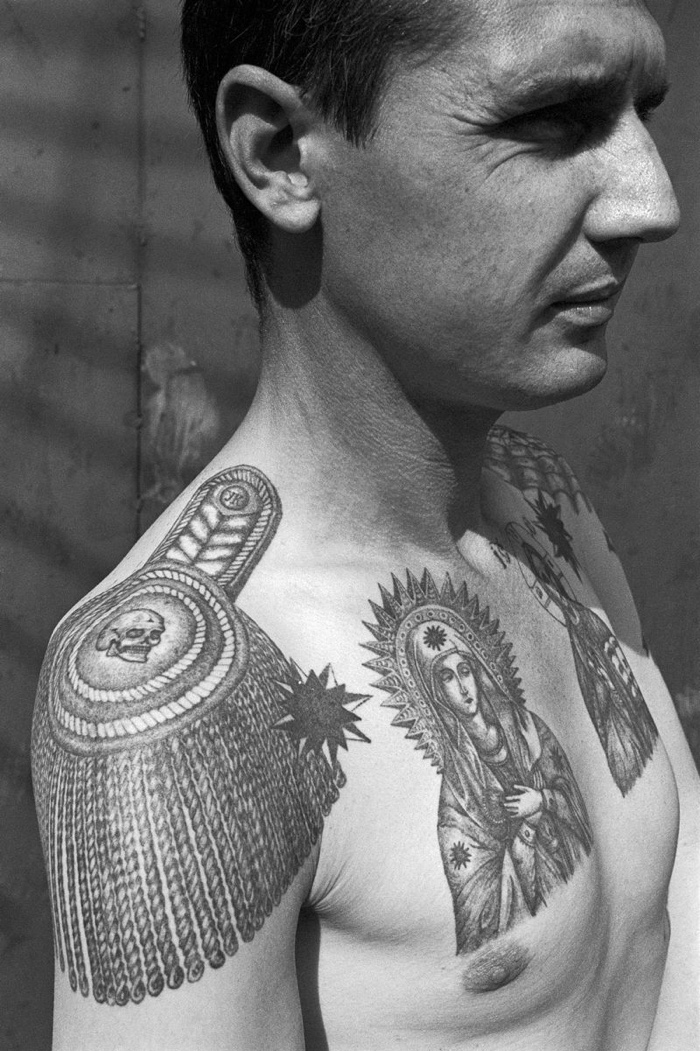
Sergei Vasiliev, from his series of photographs of Russian Criminal Tattoos, shot between 1989 and 1993 in prisons and reform settlements across Chelyabinsk, Nizhny Tagil, Perm and St. Petersburg
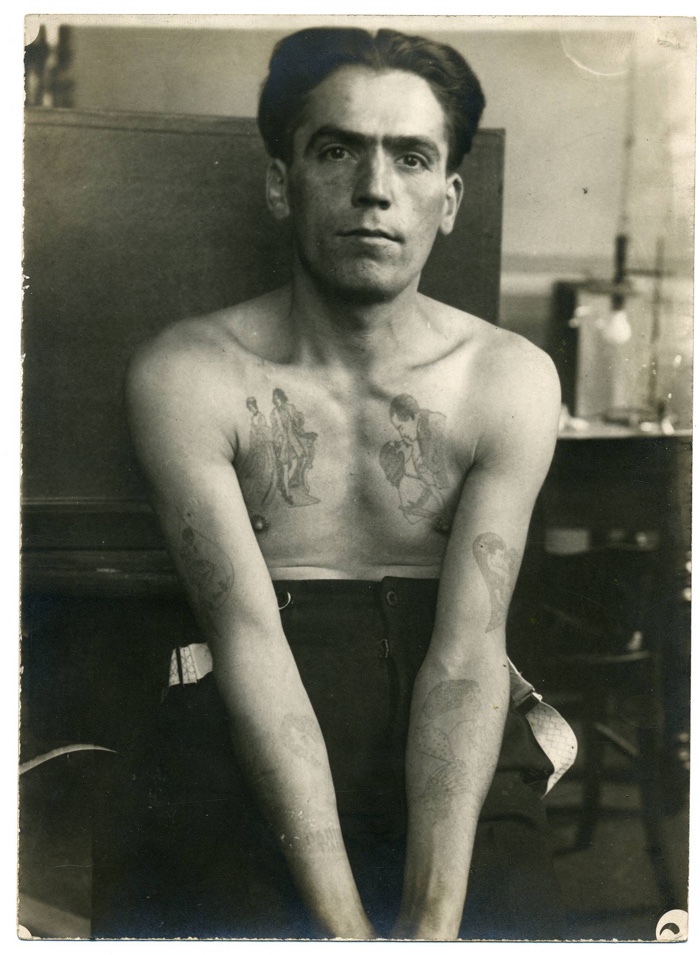
Anonymous, Carlo Pandini, early XXth century, The Museum of Criminal Anthropology “Cesare Lombroso” in Turin
Italian criminologist Cesare Lombroso believed that criminals could be distinguished from noncriminals by physical anomalies. The “born criminal” could be anatomically identified by such features as a sloping forehead, asymmetry of the face, prognathism, bloodshot eyes, excessive length of arms and other “physical stigmata.” Moreover, for Lombroso, criminal appearance was not just inherited, it could also be judged through superficial features like body tattoos. Several objects and drawings from the archives of the Museum of Criminal Anthropology “Cesare Lombroso” in Turin illustrated the kind of links his theory made between tattoos and criminality.
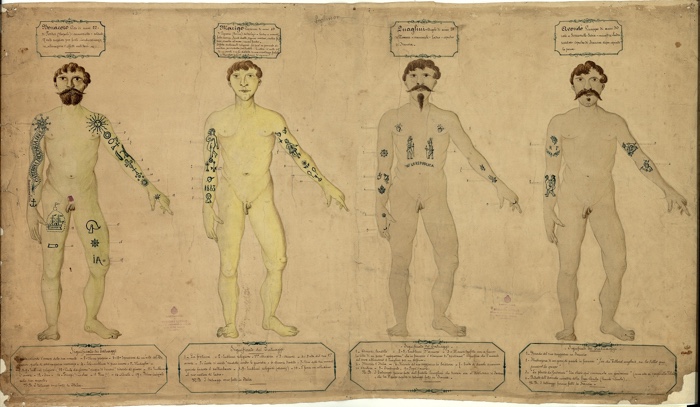
Anonymous, Ciro Bonacoro, Giovanni Marigo, Angelo Quaglini, Giuseppe Avondo, second half of the 19th century. The Museum of Criminal Anthropology “Cesare Lombroso” in Turin
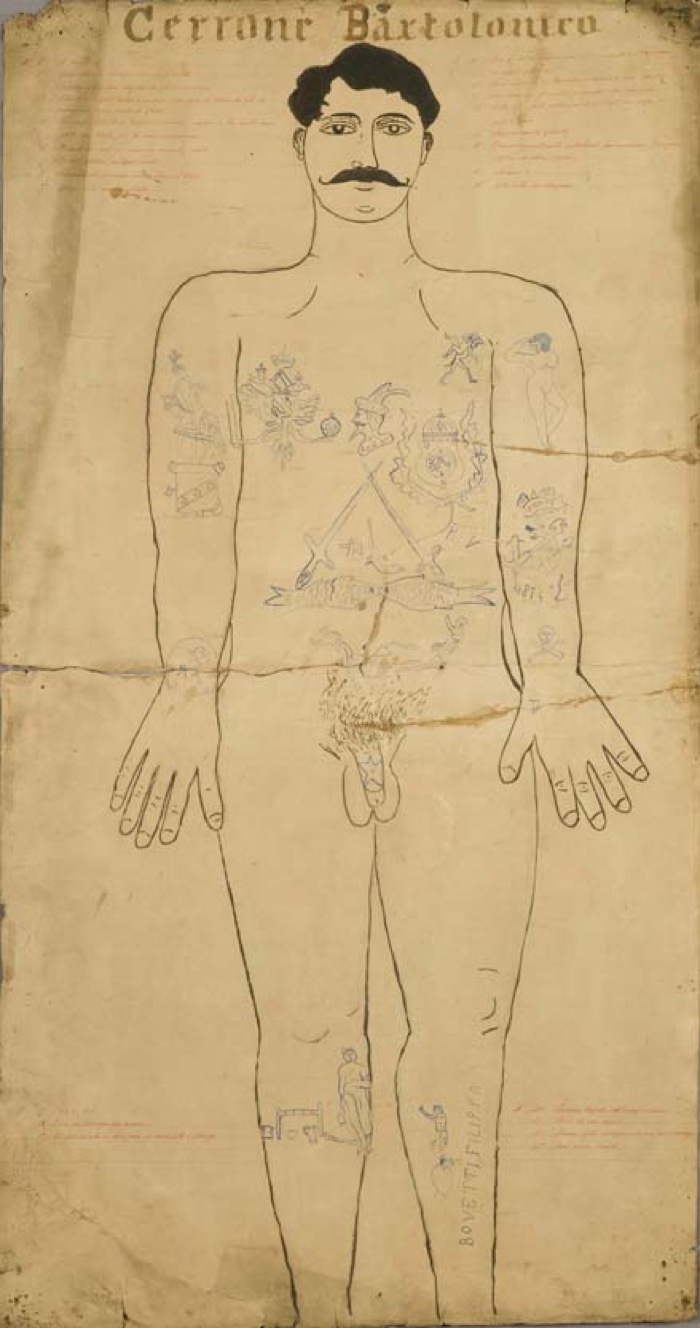
Anonymous, Giovanni Mullè, second half of the 19th century. The Museum of Criminal Anthropology “Cesare Lombroso” in Turin
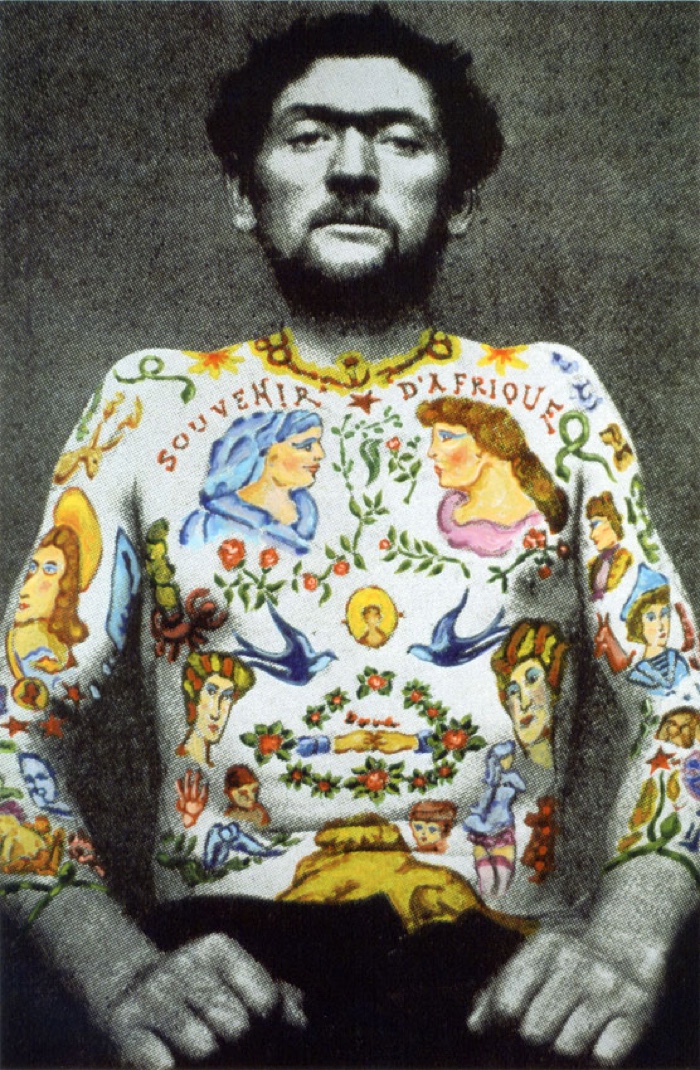
Plinio Martelli, Souvenir D’Afrique, 1974-2001. Courtesy Collezione Castello di Rivara Museo d’Arte contemporanea
Plinio Martelli added colours to images he found in judicial archives. The photos show people who had mythical creatures, scenes of violence, or esoteric, erotic or religious symbols tattooed on their skin.
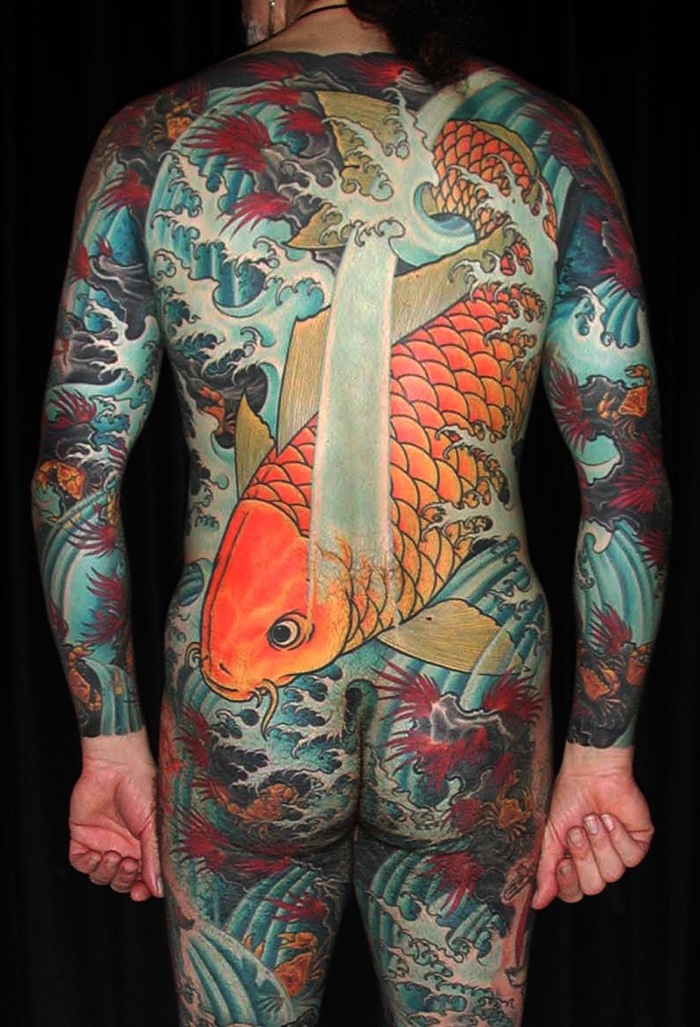
Filip Leu, Back with tattooed carp, 2003. Courtesy Filip Leu
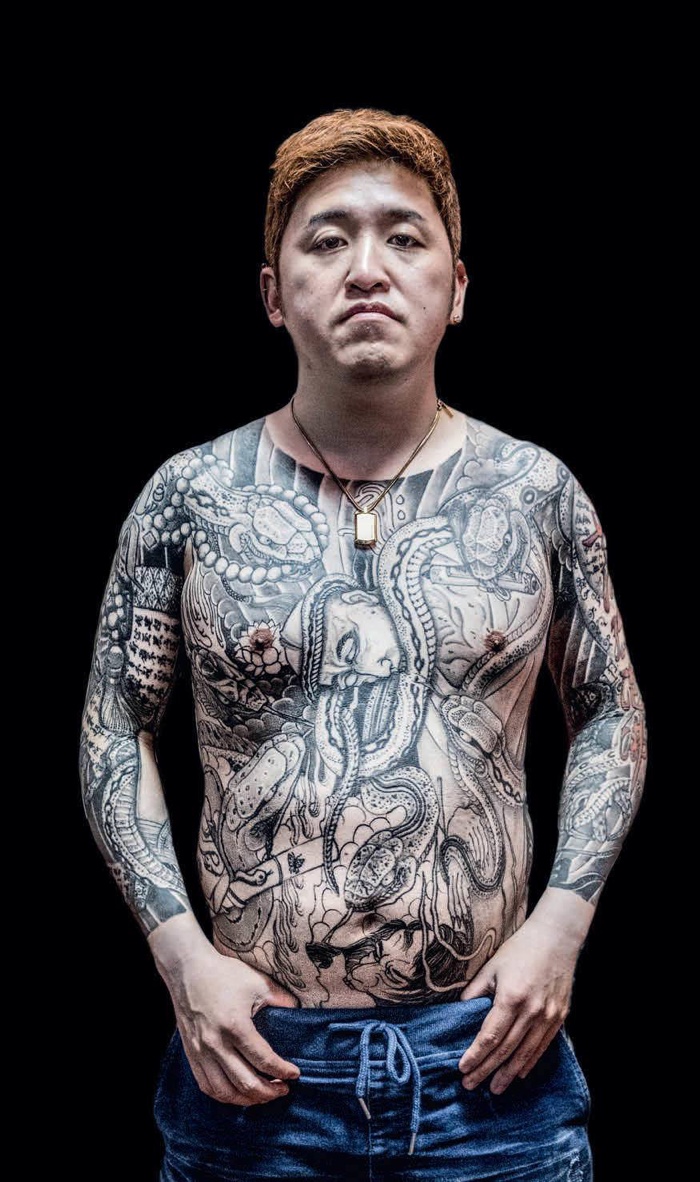
Tattoo by Horiyoshi III Sensei. Horiyoshi III Sensei – Horiyoshi III Souryou – Kazuyoshi Nakano. Son and only apprentice of Horiyoshi III Sensei, Singapore, June 2018 © Zozios
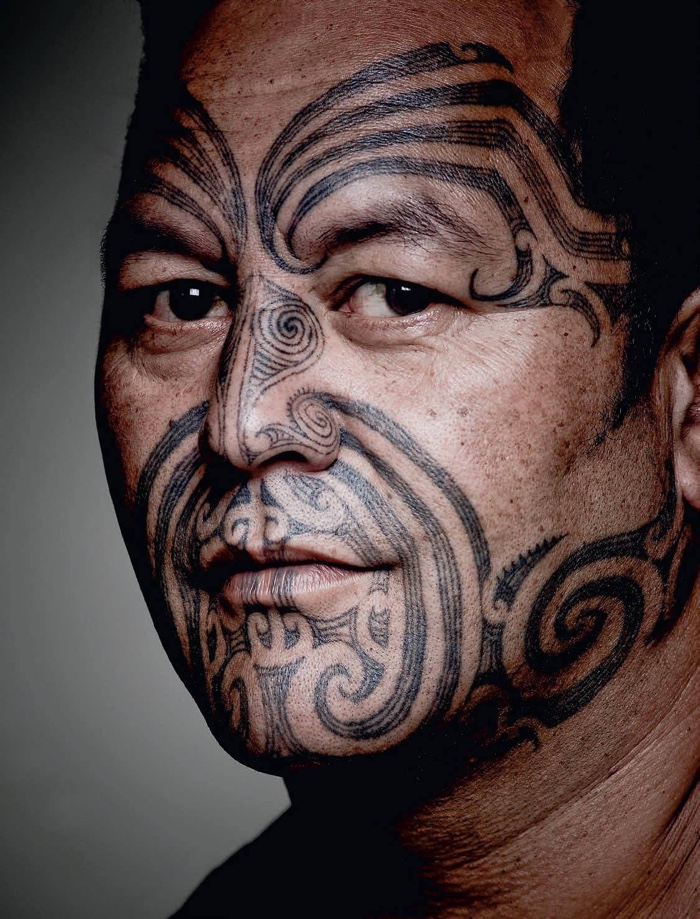
Andrew Shaylor, Blaine te Rito, Maori woodcarver, New Zealand, circa 2008
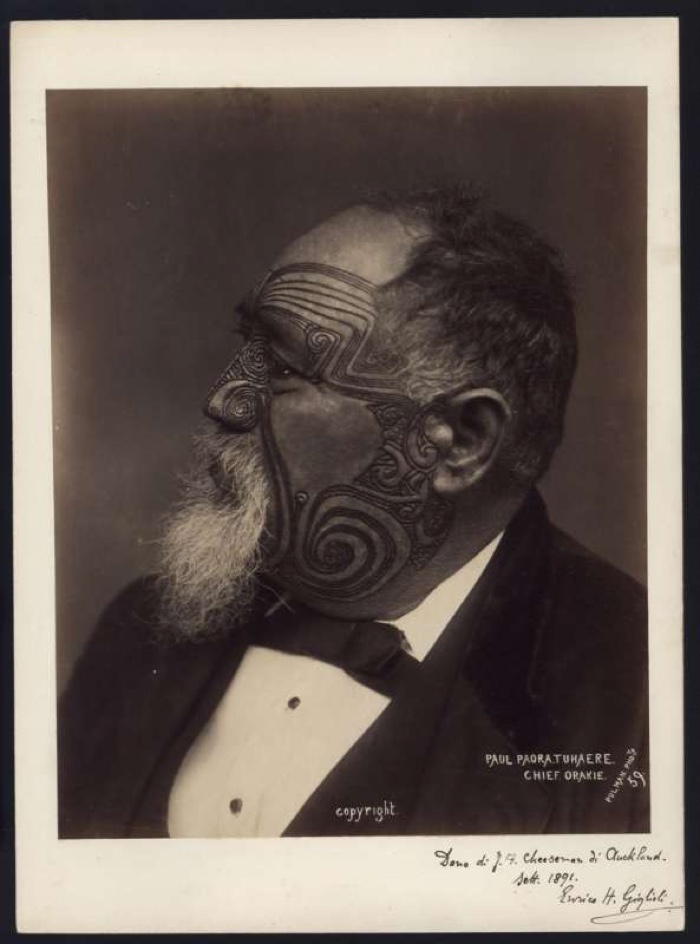
Chief Paul Paoura Tuhaere of the Orekie (Maori, New Zealand), second half of the XIXth century
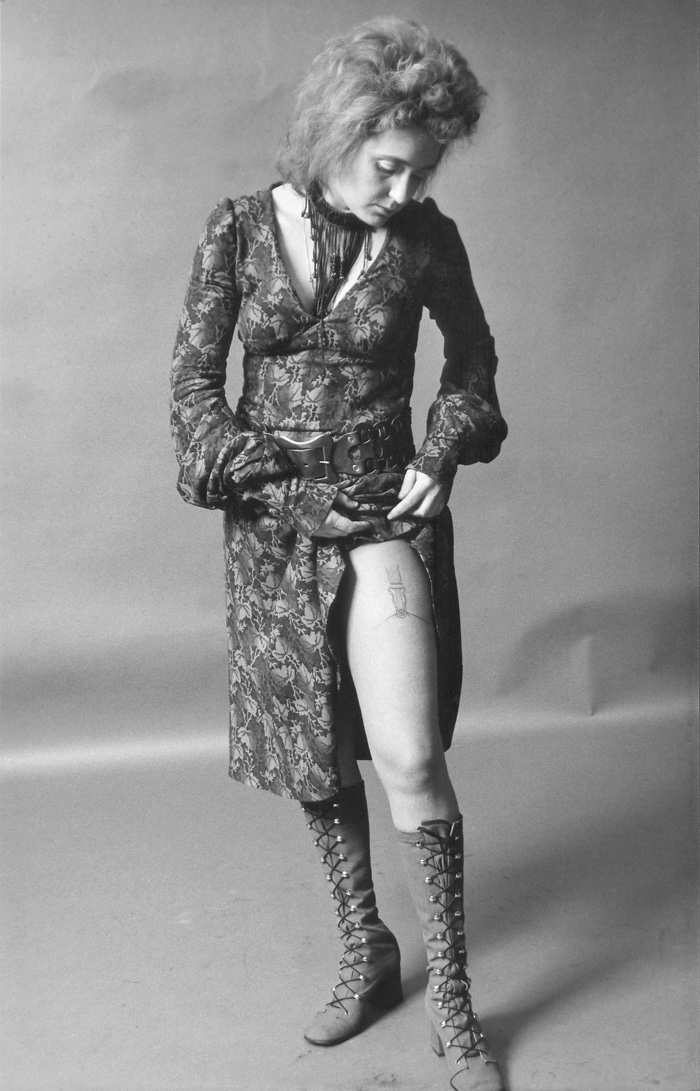
Valie Export, Tattoo II, 1972
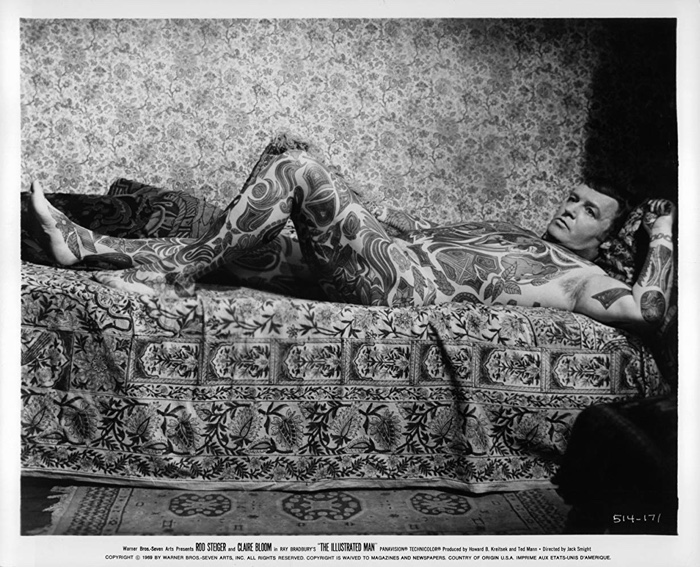
Rod Steiger in a scene from the movie The Illustrated Man, 1969
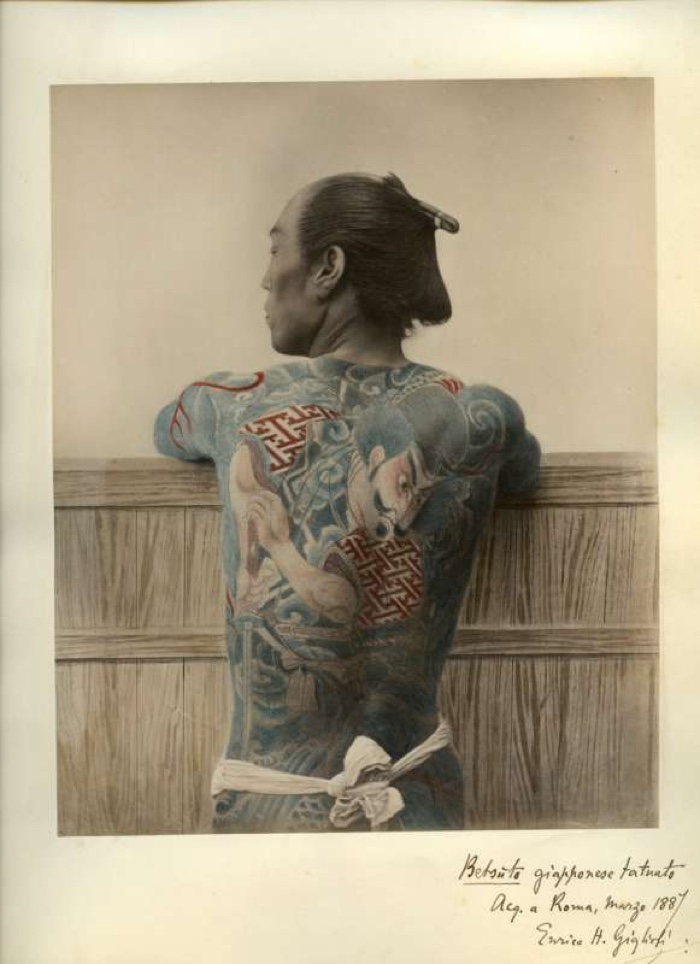
Felice Beato, Japanese Porter, late 1800s
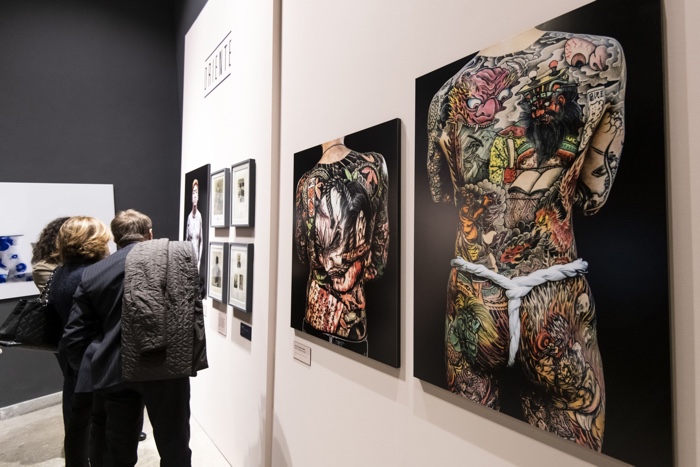
View of the exhibition TATTOO. L’arte sulla pelle / TATTOO. Art on the Skin at MAO, the Museo d’Arte Orientale in Turin
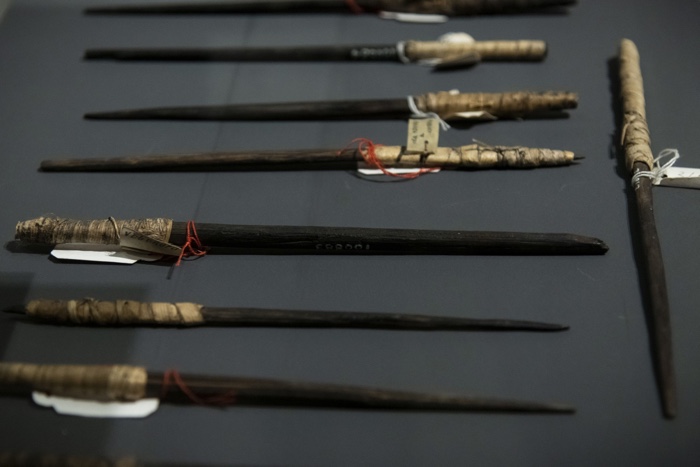
View of the exhibition TATTOO. L’arte sulla pelle / TATTOO. Art on the Skin at MAO, the Museo d’Arte Orientale in Turin
TATTOO. L’arte sulla pelle / TATTOO. Art on the Skin was curated by Alessandra Castellani. The exhibition remains open at the MAO, the Museo d’Arte Orientale in Turin until 3 March 2019.
Previously: Book review – Japanese Tattoos: History * Culture * Design, Tattooists, tattooed, Russian Criminal Tattoo portraits, Dr Lakra at Kurimanzutto in Mexico City, etc.


